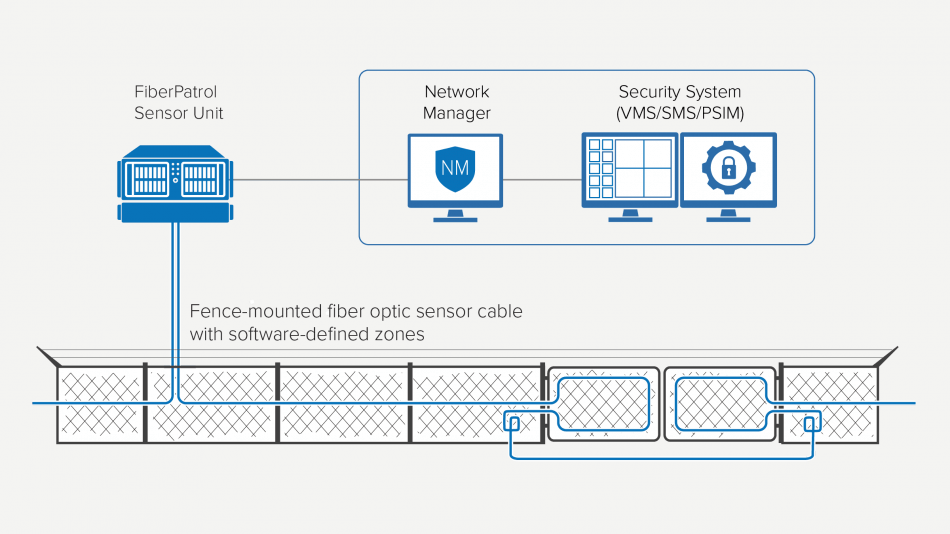Reasons to Choose a Fiber Optic Security System for Residential Security Applications
The Ultimate Overview to Fiber Optic Safety Solutions for Your Company
In an era where security worries are extremely important for organizations, understanding the intricacies of fiber optic technology can be transformative. This guide outlines exactly how incorporating fiber optic safety systems not only boosts information security however additionally uses benefits like resistance to interference and real-time monitoring capacities.
Recognizing Fiber Optic Technology

The core of a fiber optic cable is composed of a slim glass or plastic center, bordered by a cladding layer that mirrors light back into the core. Single-mode fibers are designed for long-distance transmission, while multi-mode fibers are appropriate for much shorter distances, often used within structures.
Fiber optics are not only quicker yet likewise extra protected than standard circuitry. Their intrinsic resistance to electromagnetic disturbance and the trouble of taking advantage of the signal without discovery make them a preferred option for organizations prioritizing data honesty and security. As organizations progressively rely upon protected and effective communication systems, understanding fiber optic innovation becomes important for informed decision-making.
Key Advantages of Fiber Optic Safety
When taking into consideration protection choices for a company, the advantages of fiber optic systems are especially compelling. Firstly, fiber optic innovation offers remarkable information transmission rates and data transfer capability, making it suitable for dealing with high-resolution video clip feeds from monitoring video cameras. This capacity makes sure that safety employees receive real-time data, enhancing overall feedback times to prospective safety and security threats.
In addition, fiber optic cable televisions are naturally resistant to electro-magnetic disturbance, which can endanger the integrity of standard copper-based systems. This resistance guarantees that the information transferred stays safe and continuous, providing an extra trustworthy protection facilities. In addition, optical fiber are less prone to physical damage, as they are made from glass as opposed to metal, minimizing maintenance expenses and downtime.
Another considerable benefit is the boosted scalability of fiber optic systems. As business requirements evolve, fiber networks can be quickly increased to fit added safety and security tools without significant overhauls to the existing framework. Fiber optic systems offer improved cybersecurity attributes, consisting of file encryption capacities that protect sensitive data from unapproved accessibility. Collectively, these benefits make fiber optic security systems a robust option for organizations looking for to improve their protection measures.
Installment Refine and Factors To Consider
Taking into consideration the complexities involved, the installation process of fiber optic safety systems needs cautious planning and execution. The initial step entails a comprehensive website analysis to recognize optimal places for cabling and devices. This assessment should consider environmental aspects, existing facilities, and prospective vulnerabilities.

Additionally, discover here the installation has to adhere to local building regulations and industry criteria. This might include collaborating with various stakeholders such as structure managers, IT teams, and security personnel to make sure seamless integration with existing systems.
Post-installation, strenuous screening is required to validate system efficiency and recognize any type of issues that might develop. By focusing on these considerations during the installment process, companies can make certain a robust and reliable fiber optic safety system that meets their details security needs.
Most Recent Advancements in Fiber Optic Protection
Recent developments in fiber optic technology have actually significantly boosted the abilities of protection systems for services. Among the most remarkable developments is the combination of fiber optic sensors that can identify vibrations my website and breaches along the perimeter of a facility. These sensors supply real-time monitoring, allowing quick feedback to possible breaches.
Furthermore, the growth of distributed fiber optic noticing technology permits the constant surveillance of large areas with a solitary fiber cord. This approach not only decreases setup expenses but likewise enhances the integrity of keeping track of systems by removing the requirement for numerous, different sensing units.
Additionally, advancements in multiplexing techniques have allowed services to send substantial quantities of data over fiber optic networks, improving the abilities of video clip security systems. High-def video clip feeds can now be sent over long distances without loss of high quality, guaranteeing that safety workers have accessibility to clear and actionable information.
Last but not least, the usage of artificial knowledge (AI) in combination with fiber optic systems is revolutionizing hazard detection. AI algorithms can evaluate data from fiber optic networks to recognize uncommon patterns or habits, enabling for positive safety procedures. These developments jointly stand for a considerable leap forward in fiber optic safety and security modern technology.
Picking the Right System for Your Service
Choosing the suitable fiber optic safety why not check here system for your business is crucial for making certain optimum security and assurance. To make an informed option, evaluate your specific safety and security demands, taking into consideration variables such as the size of your facilities, the nature of your operations, and prospective susceptabilities.
Begin by assessing the degree of safety and security required; as an example, high-risk atmospheres may require sophisticated systems with integrated monitoring and breach discovery capacities. Next off, think about scalability; as your business grows, your safety and security system should can expanding to fit raised demands without significant overhauls.
Additionally, check out the integrity and efficiency of various systems. Seek companies with well-known credibilities and client reviews that vouch for their service high quality. It's likewise a good idea to inquire concerning the modern technology's compatibility with existing infrastructure, ensuring a seamless combination process.
Conclusion
To conclude, fiber optic safety and security systems provide a robust solution for improving service safety facilities. The combination of high-speed data transmission, resistance to electromagnetic interference, and progressed surveillance capacities dramatically boosts overall protection (fiber optic security system). By recognizing the modern technology, identifying its advantages, and thinking about the installation procedure, companies can make educated choices. The latest technologies better boost the efficiency of these systems, ensuring that services continue to be safe and adaptable in an ever-evolving threat landscape.